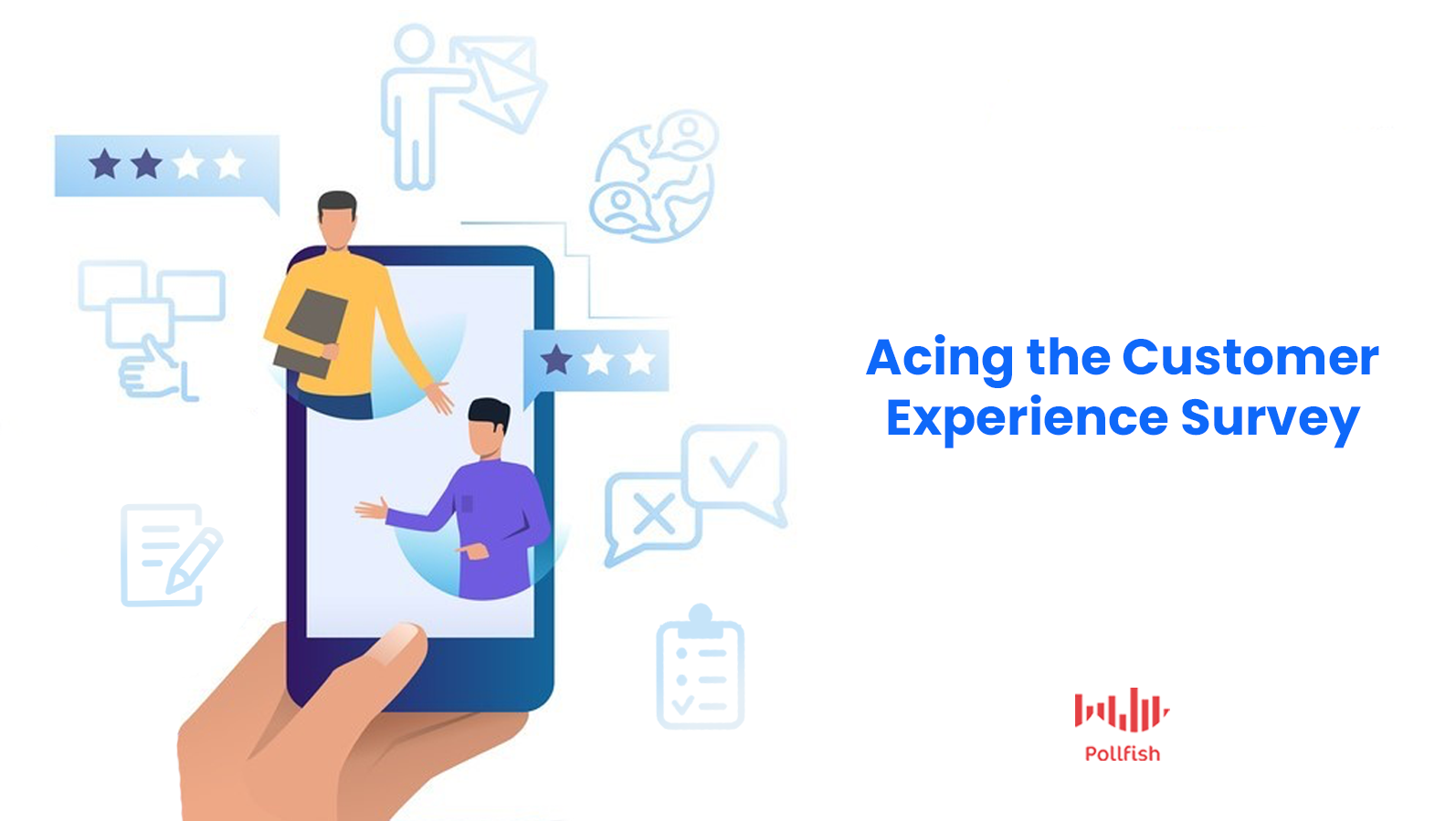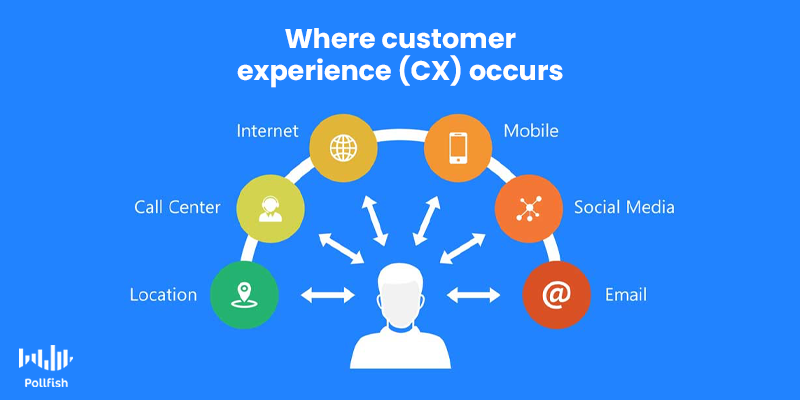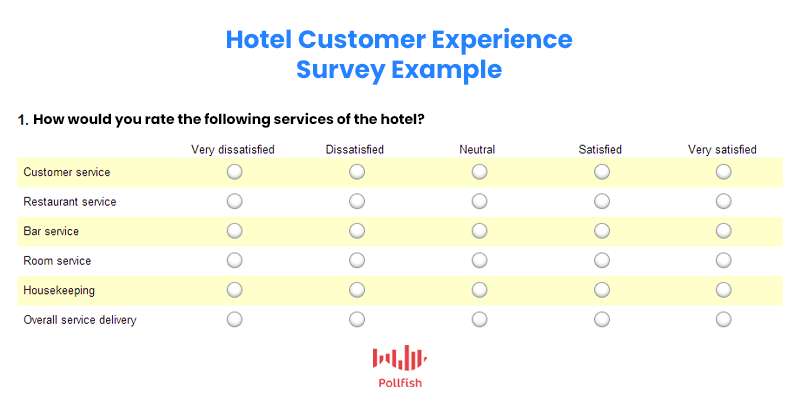How to Create a Customer Experience Survey to Retain Customers

A customer experience survey is a necessary tool to implement in your organization’s customer experience program. With CX carrying a major influence of the success of your business, it’s crucial to keep track of it.
This is because even in the competitive environment of B2C businesses, the product and cost alone are not sufficient enough to provide customer satisfaction, let alone to build loyalty.
The brands of today and the future are thriving due to the customer experience they provide.
A customer experience program refers to a methodical approach centered on improving the way a business interacts and engages with customers to improve their CX. Often this sort of program relies on a strong voice of the customer (VoC) in place.
That’s where the customer experience survey comes into play. This article explains this kind of survey in full depth so that you business can retain its customers.
Elucidating Customer Experience (CX)
Customer experience involves a variety of experiences that customers undergo in their interactions with a business. This involves all the stages in their customer journey, from viewing an advertisement to arriving at a landing page, to browsing your website, to making a purchase and all post-purchase experiences.
There are various elements that come into play with the CX; they all form a customer’s impression of a brand. These impressions are critical when it comes to maintaining customer loyalty. A bad CX incurs the risk of losing customers, as a 1 in 3 customers will leave a brand after just one poor experience.
There are more damning statistics, for example, even if a brand provides a good CX 9 out of 10 times, the one time that it fell short can lead to losing customers (even loyal ones).
As such, brands need to have a strong customer experience program as part of their business strategy. A customer experience survey is a potent tool, usually the main supplier of a customer experience program. By studying your CX with this survey, you’ll be able to improve your CX, thereby retaining customers.

Defining the Customer Experience Survey
A customer experience survey is a survey conducted to gauge various aspects of the customer experience. Brands can zero in on one component of their CX, or attempt to understand several.
Since CX involves the totality of customer interactions, behaviors and feelings, this survey can exist in a number of survey types. The following list enumerates the surveys that help you determine the state of your customer experience.
These surveys show the macro-levels, i.e., the disciplines within marketing, business, et al., that you can base around your customer research. As such, they all include their own specific types of surveys, subtypes that show you how deep and granular survey research can become.
The survey types fortifying customer experience research:
- Customer satisfaction survey
- Helps brands focus on multiple factors of customer satisfaction
- Includes the Net Promoter Score (NPS), Customer Satisfaction Score (CSAT), Customer (CES), visual ratings and custom surveys
- Product satisfaction survey
- Focuses on the product side of a business
- Includes surveys on product glitches, shipping experience and product retention
- Business survey
- Deals with key areas of business like understanding customer personas and discovering how the competition ranks against your CX.
- Measures brand awareness as it ties with several business aspects focused on the business itself
- Cross-sectional survey
- Studies a particular population at one particular point in time.
- It helps you determine your CX at a snapshot level, within a particular respondent group or market segment.
- Customer loyalty survey
- Measure the chief objective of CX: customer loyalty
- Includes surveys hinging on the Customer Lifetime Value (CVL) and the Customer Lifetime Value (CVL).
What It Helps You Study In the Customer Experience
There are multiple touchpoints in customer journeys. The customer experience survey is meant to address them all by capturing customer sentiment within each of them. These touchpoints make up the customer lifecycle; understanding how CX is relevant to them will help you form your survey, improving your experience as a result.
Mapping Out the Customer Experience in Key Stages
This is a critical phase of the customer journey, including multiple stages that a customer undergoes before making a purchase. These include:
- Early sales funnel experiences
- Online portals, billboards, physical advertisements and all else that brings awareness to your brand or a specific offering.
- Middle of the funnel interactions with customer representatives, digital journeys and social media visits.
- Late-stage experiences such as saving products for later, comparing products and using the checkout.
- Post-sales experience
- Involves ensuring that customers are happy with your products.
- Regular post-sale checkouts via surveys, emails, etc.
- This phase digs back into the previous one to collect feedback on the brand/sale discovery and ordering experiences.
- Upselling vs Returns
- Finding opportunities for upsells, cross-sells or repeat purchases, i.e., surveying customers on their future engagement or lack thereof with the company.
- Includes surveying unsatisfied customers who cancel, downgrade or return their purchases.
Creating a Customer Experience Survey

After you decide which stage of the customer experience you need to study based on the sections above, consider the following list. Many times, delivering the best customer experience involves surveying customers across all stages. Here are the steps to form an informative CX survey:
- Put together your most pressing curiosities about your CX.
- Organize them into several groups based on shared characteristics.
- Based on these groupings, filter each with a corresponding CX stage by referring to the above section.
- Find the most proper campaign within the phase you choose to study first.
- Ex: Let’s say you’re studying early sales funnel experiences. You decide you’d like to survey customers on how they found your brand and whether they enjoyed the experience. As such, you will want to study your ad campaigns, be they digital or physical (subway ads for example, in a particular city).
- Once you connect your sales funnel stage with a broader campaign, divide that campaign into several smaller, more specific survey premises.
- In reference to the above example, you may have multiple ad campaigns; base your survey on one of those campaigns, or create one that tests respondents on whether they are aware of one or multiple advertisement campaigns.
- Decide on which kind of survey best fits your particular survey campaign from the above list.
- Next, choose a specific survey from the survey types you’ve selected above.
- Put together several questions, these can begin as high-level questions and wade into those that specifically ask respondents to rate their experience. Examples:
- What was the best part about browsing our site?
- How did you feel about [example] element?
- What can we do better to improve your experience?
- Did you find it easy or difficult to [browse our site, speak with our rep, ex]?
- If you choose visual ratings questions (ratings via stars, numbers or some other visual element), consider providing open-ended follow-up questions to understand the reasoning behind their responses.
- Remember to thank your respondents at the end of the survey (or beginning) and remind them that their participation helps your brand improve the experience for consumers like them.
Making the Most of Your Customer Experience Survey
Although you are assessing your consumers’ experiences through this survey, the survey itself is another customer experience for your consumers. This is predominant in this survey type, as it doesn’t simply mention your brand.
Rather, it is based solely on the feelings and attitudes surrounding your brand’s CX, rather than general customer habits like, for example, a regular consumer survey, a longitudinal survey and others. Such surveys depend on understanding customers and external influences, whereas a customer experience survey focuses on your business.
As such, keep in mind that as yet another experience, this survey will shape your customers’ and target market’s perception about your business, so follow the above best practices, along with the many others, such as what to look for in online survey tools. In this regard, the survey platform you use is equally important to the CX of your CX survey.
Frequently asked questions
What is a customer experience survey?
A customer experience survey is a survey that collects data on different aspects of the customer experience. Brands can use customer experience surveys to narrow their focus on one component of the CX or even examine their overall CX.
Why is a customer survey experience important?
A customer experience survey is important because of the weight CX carries in influencing the success of your business. Customer experience surveys are usually the main supplier of customer experience programs. Studying them helps you improve your CX and retain customers as a result.
How do you create a customer experience survey?
To create a customer experience survey, you must first choose an area of your CX to study and select the campaign that matches this characteristic. Then, decide which survey type will fit your campaign and put together questions that require visual ratings or are open-ended. Finally, thank the respondents at the end of the survey and consider offering incentives.
How is a customer experience survey different from a regular consumer survey?
A customer experience survey revolves around your customer experience, which includes all the feelings and perceptions your brand incites in a customer journey, rather than general customer habits.
Why is the survey platform you use important to the results of customer experience (CX) survey?
Using the proper online survey platform helps streamline the survey research process. With the right platform, you can reach your intended target audience, screen them for behavioral and psychographic needs, ask of variety of question types, route them to correct questions based on previous answers and gain insights at speed.
Pollfish Marketing Team
Ready to Try Pollfish?
Create your survey with AI, target high-quality respondents starting at $0.95 per complete, and start getting results in just minutes in real-time. From running a simple product concept survey to managing a constant stream of trackers for dozens of clients in dozens of countries, we’ve got you.
